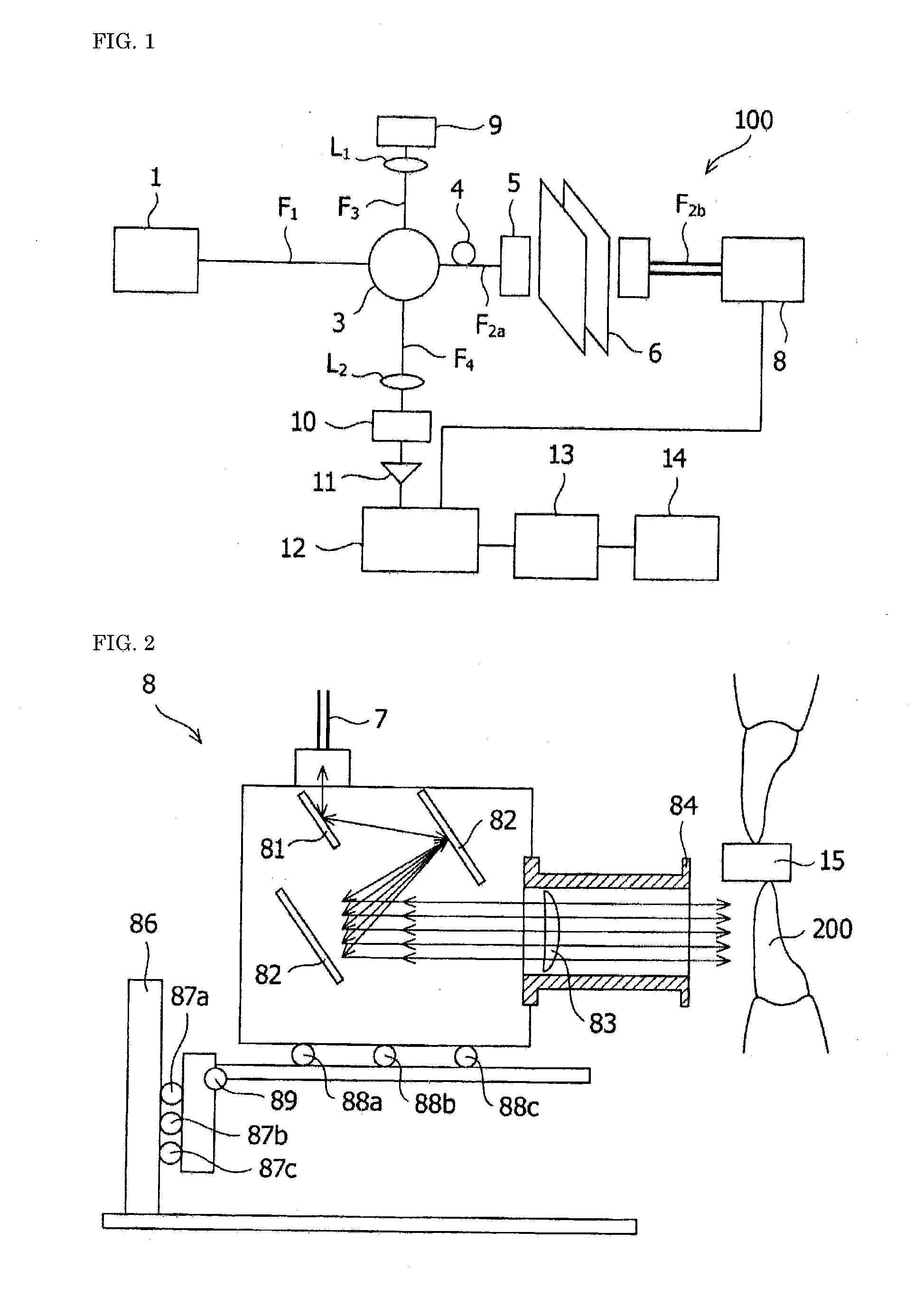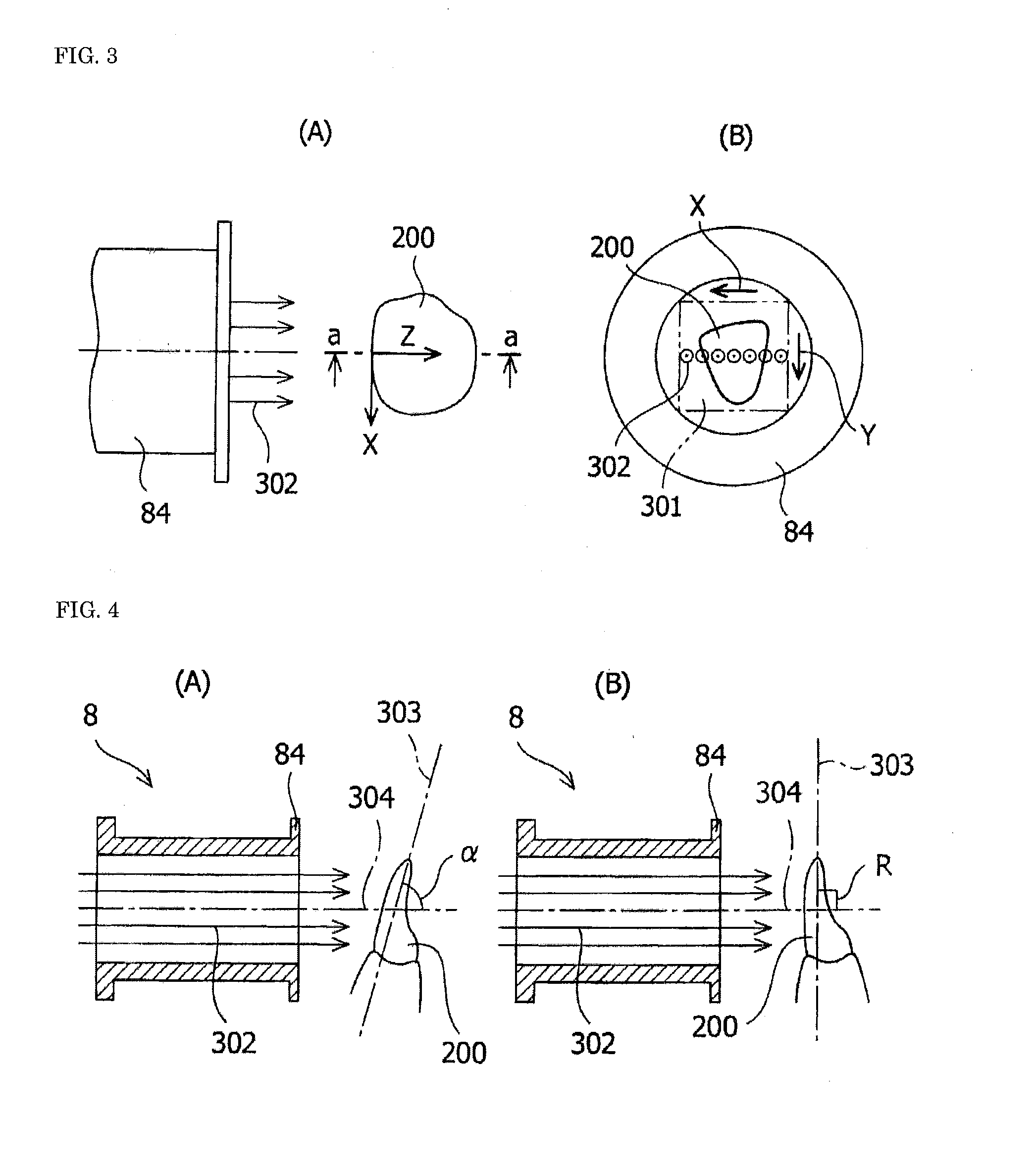Method and apparatus for measuring and displaying dental plaque, gingiva, and alveolar bone
a technology of dental plaque and apparatus, applied in the field of apparatus and to a method for measuring and displaying dental plaque, gingiva, and/or alveolar bone, can solve the problems of difficult recognition of the attachment of dental plaque to the surface of the tooth, failure to provide details of the state of dental plaque attachment, and strong discomfort of patients, so as to encourage more reliable dental practice, high reproducibility and reliability, and excel in reproducibility
- Summary
- Abstract
- Description
- Claims
- Application Information
AI Technical Summary
Benefits of technology
Problems solved by technology
Method used
Image
Examples
first embodiment
Method and Apparatus for Measuring and Displaying Dental Plaque
[0068]An embodiment of the present invention relates to an apparatus for measuring and displaying dental plaque. The apparatus for measuring and displaying dental plaque according to the present embodiment uses an OCT (optical coherent tomography) apparatus to selectively measure dental plaque, in particular. The OCT apparatus is capable of measuring an intravital tissue with very high microscopic resolution. Further, the OCT apparatus, which uses a light source that emits near infrared light, which can reach a site under a body surface, can perform measurement not only in a surface portion of a subject but also a deep portion under the body surface of the subject. Near infrared light, which is electromagnetic radiation having no detrimental effect on a living body, unlike roentgen-rays (X-rays), allows noninvasive inspection of a subject in an exact sense. The OCT apparatus in the present invention is, in particular, pr...
second embodiment
Method and Apparatus for Measuring and Displaying Gingiva and / or Alveolar Bone
[0135]Another embodiment of the present invention relates to a method for measuring and displaying gingiva and / or alveolar bone. In the method for measuring and displaying gingiva and / or alveolar bone, the same OCT apparatus as that described in the first embodiment can be used. Infrared light is so applied to a tooth and periodontal tissue by using the OCT apparatus that scattering intensity values of interference light from the gingiva and the alveolar bone are provided, and a two-dimensional optical coherence tomographic image and / or a three-dimensional optical coherence tomographic image can then be generated.
[0136]To quantitatively evaluate swelling of gingiva and damage to alveolar bone, which lead to periodontitis, in particular, the present embodiment is characterized in that a gingiva region and an alveolar bone region are evaluated based on a two-dimensional optical coherence tomographic image an...
example 1
Measurement of Gray Level Values in Dental Plaque Region and Enamel Region (Two-Dimensional Tomographic Image: 50 Slices)
[0150]A light source that emits near infrared light, which is harmless to living bodies, was used as the light source and the dental plaque measuring probe shown in FIG. 2 was used to capture an image of a front tooth of a patient as the subject. Image software photoshop (manufactured by Adobe Systems Software Ireland Ltd) was used to measure gray level values in 150 sites in a dental plaque region and an enamel region in a two-dimensional tomographic image generated through conversion of scattering intensity values obtained from the subject into gray level values. As a result, it was ascertained that the gray level values in the enamel region and the gray level values in the dental plaque region differed from each other.
[0151]Dental plaque region: 169.4 in average (maximum of 207 to minimum of 140)
Enamel region: 95.9 in average (maximum of 119 to minimum of 63)
(S...
PUM
 Login to View More
Login to View More Abstract
Description
Claims
Application Information
 Login to View More
Login to View More - R&D
- Intellectual Property
- Life Sciences
- Materials
- Tech Scout
- Unparalleled Data Quality
- Higher Quality Content
- 60% Fewer Hallucinations
Browse by: Latest US Patents, China's latest patents, Technical Efficacy Thesaurus, Application Domain, Technology Topic, Popular Technical Reports.
© 2025 PatSnap. All rights reserved.Legal|Privacy policy|Modern Slavery Act Transparency Statement|Sitemap|About US| Contact US: help@patsnap.com



